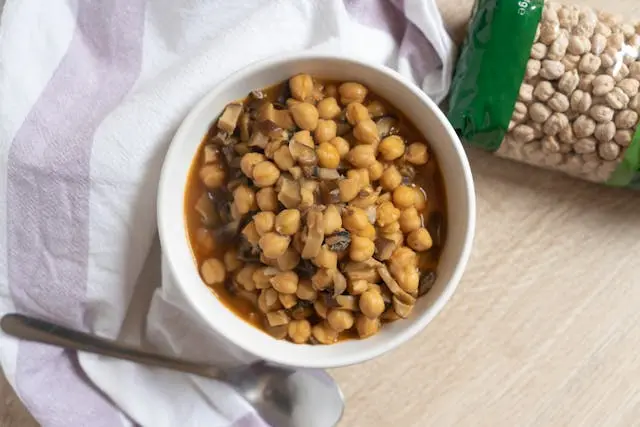India’s rich culinary heritage is not just about tantalizing flavors and vibrant colors but also a treasure trove of nutritional wisdom. Traditional Indian diets, rooted in the principles of Ayurveda, offer balanced nutrition essential for growing children. However, as modern health science evolves, integrating these traditional diets with contemporary health recommendations can create a wholesome nutritional plan for today’s children.

The Essence of Traditional Indian Diets
Traditional Indian diets are predominantly plant-based, focusing on whole grains, legumes, fruits, vegetables, dairy products, nuts, and seeds. Spices such as turmeric, cumin, coriander, and ginger not only enhance flavor but also provide significant health benefits. Here are some core elements of traditional Indian diets:
- Whole Grains: Rice, wheat, millet, and barley form the base of Indian meals. These grains are rich in fiber, essential vitamins, and minerals. Whole grains aid digestion, maintain energy levels, and are crucial for the overall growth and development of children.
- Legumes and Pulses: Lentils, chickpeas, black beans, and other pulses are primary protein sources in Indian diets. They are rich in fiber, iron, and folate, essential for muscle growth and overall health.
- Fruits and Vegetables: A variety of seasonal fruits and vegetables are integral to Indian meals. They provide vitamins, minerals, and antioxidants necessary for boosting immunity and preventing diseases.
- Dairy Products: Milk, yogurt, and paneer (Indian cottage cheese) are common in Indian diets. They are excellent sources of calcium, essential for strong bones and teeth.
- Spices and Herbs: Indian spices like turmeric, ginger, garlic, and fenugreek have anti-inflammatory and antioxidant properties. They aid digestion and enhance the body’s immunity.
- Healthy Fats: Ghee (clarified butter) and mustard oil are traditional cooking mediums. They provide essential fatty acids and aid in the absorption of fat-soluble vitamins.
Modern Health Recommendations for Children
Modern nutrition science emphasizes a balanced diet, proper hydration, and regular physical activity for children’s optimal growth and development. The key aspects of modern health recommendations include:
- Balanced Nutrition: A balanced diet includes a variety of foods from all food groups—proteins, carbohydrates, fats, vitamins, and minerals. It ensures that children get all the necessary nutrients for their growth.
- Portion Control: Overeating or undereating can lead to health issues. It’s essential to provide children with age-appropriate portions to maintain a healthy weight.
- Hydration: Adequate water intake is crucial for children’s health. Water helps in digestion, absorption of nutrients, and maintaining body temperature.
- Limit Sugar and Salt: Excessive sugar and salt can lead to obesity, hypertension, and other health problems. It’s recommended to limit the intake of sugary snacks and salty foods.
- Physical Activity: Regular physical activity is essential for children’s physical and mental development. It helps in maintaining a healthy weight, improving cardiovascular health, and boosting mood and energy levels.
- Avoid Processed Foods: Processed and junk foods are high in unhealthy fats, sugars, and sodium. They should be replaced with whole, natural foods.
Integrating Traditional Indian Diets with Modern Health Recommendations
Combining the wisdom of traditional Indian diets with modern health recommendations can create a balanced and nutritious plan for children. Here are some practical ways to achieve this:
- Incorporate Whole Grains: While traditional Indian diets already emphasize whole grains, modern diets often rely on refined grains. Encourage the use of whole grains like brown rice, quinoa, and whole wheat in daily meals.
- Enhance Protein Intake: Legumes and pulses are excellent protein sources, but it’s also important to include a variety of proteins. Incorporate eggs, lean meats, and fish, especially for non-vegetarian children.
- Boost Vegetable and Fruit Intake: Ensure that children consume a variety of colorful fruits and vegetables daily. This practice not only provides essential nutrients but also helps in developing healthy eating habits.
- Healthy Cooking Methods: Traditional Indian cooking methods often use deep frying. Opt for healthier cooking methods like steaming, grilling, and sautéing to retain nutrients and reduce unhealthy fat intake.
- Moderate Use of Dairy: While dairy is essential, moderation is key. Ensure that children get enough calcium from other sources like leafy greens, almonds, and fortified foods.
- Limit Sugar and Salt: Traditional Indian sweets and snacks can be high in sugar and salt. Replace these with healthier options like fresh fruit, yogurt with honey, or homemade snacks with minimal salt.
- Encourage Physical Activity: Incorporate regular physical activity into children’s daily routines. Traditional Indian games and sports can be a fun and engaging way to keep children active.
Practical Meal Plan Examples
Breakfast
- Traditional: Poha (flattened rice) with peas and carrots, a glass of buttermilk.
- Modern Twist: Oats porridge with almonds and raisins, a fruit smoothie.
Lunch
- Traditional: Dal (lentil curry), brown rice, a side of mixed vegetable sabzi (stir-fry).
- Modern Twist: Quinoa salad with chickpeas, cucumber, tomatoes, and a lemon-tahini dressing.
Snack
- Traditional: Roasted chana (chickpeas) and peanuts.
- Modern Twist: Greek yogurt with honey and a handful of berries.
Dinner
- Traditional: Whole wheat roti (flatbread), paneer tikka (grilled cottage cheese), and a bowl of mixed vegetable soup.
- Modern Twist: Grilled chicken with steamed broccoli and sweet potato fries.
MORE POSTS: Encouraging Healthy Habits: Nutrition, Exercise, and Sleep for Teens
Conclusion
Traditional Indian diets offer a rich array of nutrients vital for children’s growth and development. By integrating modern health recommendations, parents can ensure that their children receive balanced, wholesome nutrition. Emphasizing whole grains, diverse protein sources, a variety of fruits and vegetables, healthy fats, and regular physical activity can create a foundation for lifelong health and well-being. By bridging the gap between tradition and modernity, we can foster a new generation of healthy, happy children.
References
- Reddy, K. S., & Katan, M. B. (2004). Diet, nutrition and the prevention of hypertension and cardiovascular diseases. Public Health Nutrition, 7(1a), 167-186.
- Misra, A., Singhal, N., & Khurana, L. (2010). Obesity, the Metabolic Syndrome, and Type 2 Diabetes in Developing Countries: Role of Dietary Fats and Oils. Journal of the American College of Nutrition, 29(sup3), 289S-301S.
- Gopalan, C. (1992). Nutrition in Major Metropolises. In A. H. N. Yambor (Ed.), Nutrition in Urban Development (pp. 57-68). Oxford University Press.
- Indian Council of Medical Research (ICMR). (2010). Nutrient Requirements and Recommended Dietary Allowances for Indians. National Institute of Nutrition, Hyderabad.
- World Health Organization (WHO). (2020). Healthy diet. Retrieved from https://www.who.int/news-room/fact-sheets/detail/healthy-diet



